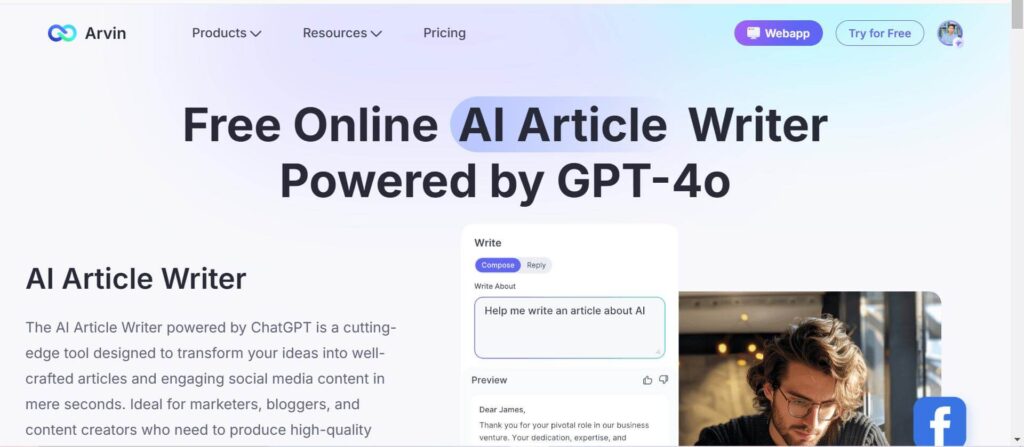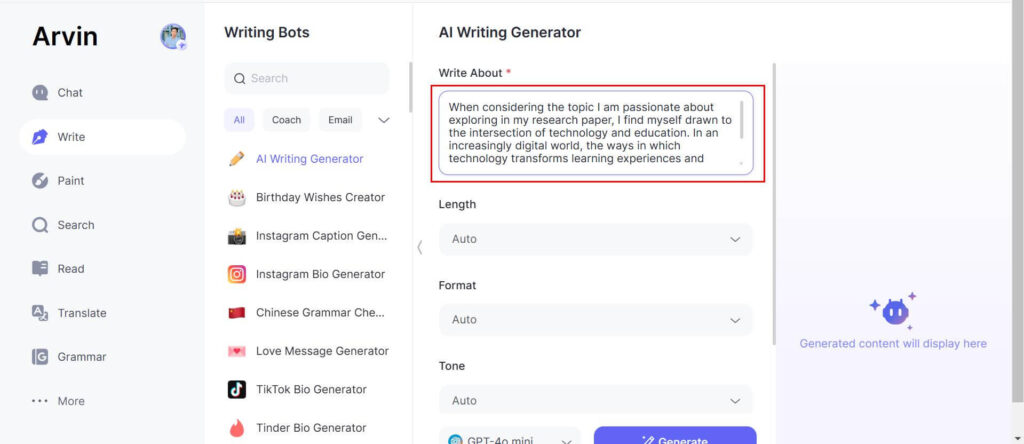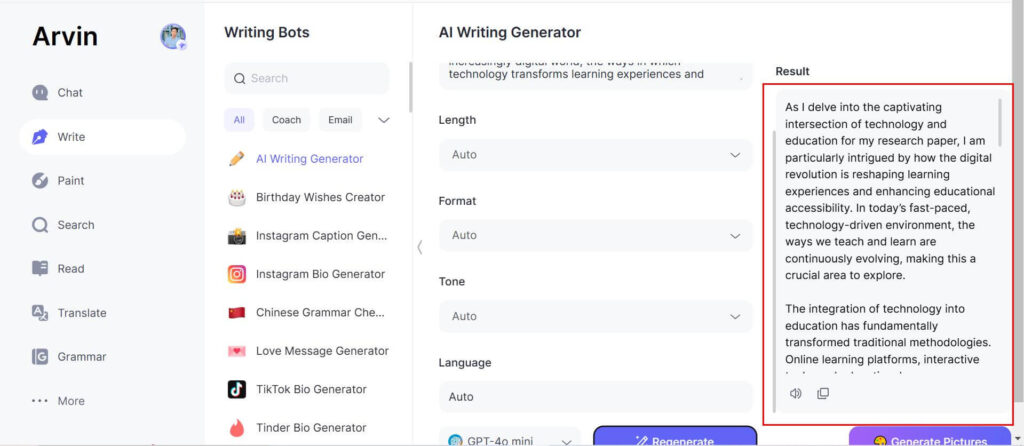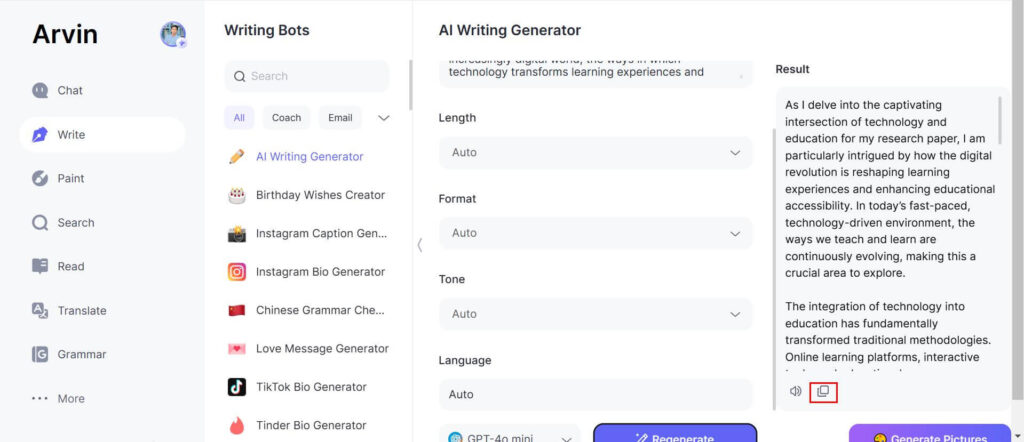A well-crafted problem statement is crucial in solving any issue, whether it’s in business, research, or project management. In every situation, be it a corporate setting, research, or even executing a project, drafting a problem statement is crucial. It contains accurate description of the situation, defines the scope within which solutions are sought, and in essence describes the challenge. Thus, this article will help you to perform the required steps necessary for how to write a problem statement correctly, as well as quickly to solving the problem and tell some best AI writer tool which make your work easy.
What is a Problem Statement?
To frame a challenge that needs to be solved, a problem statement is a shortened version of the definition. The impression of the need for concern, its scope and its significance should also be conclusive on the issue to be addressed. Well formulated how to write a problem statement are critical in the formulation of business strategy, doing research or managing projects. This explains what the problem is, so that the proper intervention mechanisms can be devised. Easier human-machine-to-human transition even while cloning the above machine-generated statement.
Purpose of Writing a Problem Statement
The problem statement addresses the issue as well as its context with the aim of finding practical solutions. It is useful in the solving of future problems which include the devising of plans, setting of priorities, and specifying actions. It is formulated in such a way that everybody participating in the project understands how the problem is to be solved.
Importance of Clear Problem Statements
Clarity in the how to write a problem statement is critical because it helps to avoid misunderstandings and misinterpretations. A well-defined problem statement will ensure resources and efforts are being utilized for the right issue. In case of unclear problem statements, teams or individuals will be trying to solve a problem that does not exist; this is wastage of time and resources. A clear problem statement will provide a clear foundation on which strategic plans, decisions, and successes can be built.
Why a Good Problem Statement Matters?
A good how to write a problem statement brings focus to a project or initiative by ensuring that efforts are directed at solving the core problem. A problem that is not well defined leads to confusion, conflicting priorities, and ineffective use of resources. For example, in business, defining the issue as “Customer retention rates are declining” is far more focused than saying “We have problems with customers.” The former clearly highlights the specific challenge, making it easier to address effectively.
Ensuring Effective Solutions
A problem statement is a blueprint for the identification of targeted solutions. It will be easier to brainstorm and evaluate potential solutions when the problem is clearly defined, which can address the issue directly. Suppose the how to write a problem statement indicates a drop in sales due to poor marketing strategies. In this case, the solution will target optimizing marketing campaigns and not wider issues unrelated to the problem, such as customer service or product quality.
Building Consensus
A good problem statement unites stakeholders, team members, or researchers around a well-articulated issue. When everyone understands and agrees on the problem, it is easier to collaborate and work toward a shared solution. In business, this means alignment between departments like marketing, sales, and customer service, making sure everyone is on the same page. In academic research, a well-articulated problem statement helps researchers stay focused and minimizes disagreements about the project’s direction.
Supporting Research and Analysis
A well-articulated how to write a problem statement is the basis of any research project. It is the foundation on which the whole study is based, both in research and analysis. A good problem statement clearly sets the course for an investigation and ensures that the research is focused, relevant, and points toward the intended outcomes. It gives background, scope, and helps researchers understand the magnitude of the problem.
Key Components of a Problem Statement
1. Clearly Identifying the Problem
Defining the problem is the first critical step in formulating a how to write a problem statement. Identifying the core problem removes ambiguity and focuses the research. When a clearly defined problem is at hand, such a problem will serve as the frame within which the research will evolve, influencing the choice and scope of questions that can or should be asked. The initial step in framing a problem is the formulation of a question:
- What is the central problem or question that needs to be resolved?
- What, about the problem, is currently known?
- What is the knowledge gap that the research will seek to fill?
2. Impact or Significance of the Problem
Once a problem has been identified, a statement of its significance must follow. That is to say, explain why it is important. This section highlights the results from not finding a solution for the problem and thereby makes the research urgent and/or relevant. It responds to this question: “What will likely happen if this problem continues to exist?”
3. Scope of the Problem
The size of the problem defines the limits of the research field. It defines the scale of the problem, thereby preventing a general or broad research literature. This includes, for instance, spatial, temporal, or demographic boundaries to the problem.
4. Stakeholders Involved
A very important part of a problem statement is the identification of who the stakeholders are. These will be the individuals or parties that are impacted by the problem or have a vested interest in its solution. The stakeholders can be employees, consumers, government entities, or communities depending on the nature of the problem.
5. Desired Outcome or Goal
The solution is the target of the research, that is, the aim or end that the research is being conducted to accomplish. This subsection describes the ultimate outcome the study aims to achieve and guides the study. Specifically, it contributes to the concentration of research efforts on achieving a practical and meaningful consequence of the problem.
How to Write a Problem Statement
Step 1: Clearly Define the Problem
The problem statement is to start with the unambiguous formulation of the problem. For this to be done successfully, the researcher must identify the problem it is, the location, which populations it is impacting, and why it is significant. The, precisely, defined problem guarantees the research is not a side track and that its line with the goals is maintained. First, it is necessary to divide the problem into its components and focus it in a very specific way.
Step 2: Describe the Significance
Following the definition of the problem, it is also relevant to discuss why the solution of this problem has repercussion. This step helps in giving value to the research. The researcher is obliged to take account of the possible effect for various stakeholders and the effects of the inaction at this point. The impact should be convincing, by demonstrating that the research is worthy of further investigation because of its practical importance.
Step 3: Specify the Scope
Defining the scope comes after establishing the problem and its significance. That is, a specification of the boundaries within which the research has to be done is carried out. Here, one needs to state what extent the study should consider its time frame, geographical location, or even the populations that could be investigated. In defining such limits, the researcher focuses his study and will not feel overwhelmed by the broad scope of the issue at hand.
Step 4: Identify Stakeholders and Related Concerns
The definition of the stakeholders who care about the issue is another key part of the how to write a problem statement. At this stage, the researcher should declare who is likely to be involved by the research and how should the researchers’ concerns be at the center of the study. Have regulatory agencies, community organizations, or any other group of people likely to be either impacted or potentially benefit from the results? The comprehension of these positions will offer the researcher the chance to carry out the study in the manner that makes it most interesting and significant for all those involved.
Step 5: State the Desired Outcome
Once the problem has been well defined, its significance has been established, and the scope and stakeholders have been outlined, one then states the desired outcome or goal. The goal of the research should be realistic, specific, and measurable, since this concretizes the direction of the research. Having a clear goal will assist the researchers in designing the study, choosing methodologies appropriate for it, and gauging the success of the project upon completion.
Step 6: Refine and Revise
The final step in writing a problem statement is refinement and revision. Reread the statement for coherence, accuracy, and completeness. Ask if the problem has been clearly identified, whether the scope of the problem is appropriate, and whether the significance of the problem has been fully explained. Revision helps ensure that the problem statement is not only valid and accurate but also appealing and focused. This step also involves verification for any information gaps or illogical deductions that can adversely affect the entire research process.
Common Mistakes to Avoid When Writing a Problem Statement
One of the most important tasks of a how to write a problem statement is to clearly identify the problem and thus enable the creation of a solution. However, a problem statement is prone to various types of mistakes which may limit its usefulness. Some of the common errors to be avoided are as follows:
1. Being Too Vague or Broad
One of the most frequent mistakes is that a problem statement becomes too vague or too general. A general problem statement usually lacks focus, which in turn complicates the process of highlighting the main problem and further working out specific solutions. For instance, “Our Company needs to improve customer satisfaction” is too general. It doesn’t specify what aspects of customer satisfaction are unsatisfactory or why it is relevant to improve the situation.
2. Lack of Solution to the Root Cause
The other error involves failure to point to the root cause of what is to be solved. Very often, problem statements address symptoms instead of problems. For example, “Employees are not meeting performance goals” describes symptoms but not the cause. Without an understanding of the root cause, solutions may only treat the symptoms of the problem, leading to ineffective or temporary fixes.
3. Making the Statement Too Complicated
Although details are essential, too much information associated with stating the problem sometimes causes complication and confusion to the readers.
An excessively specific statement could overwhelm and muddy up the crucial issue. For instance, a problem statement like “Our current software system is outdated, lacking in features we need, such as an integrated inventory management system, real-time data processing, and user-friendly interfaces that have caused inefficiencies across multiple departments” can be confusing due to the overload of specifics.
4. Ignoring Stakeholders’ Needs
A critical mistake is ignoring the needs of the stakeholders affected by the problem. Whether it’s employees, customers, or external partners, failing to consider their perspectives can result in a solution that doesn’t address their concerns. For example, if a company is addressing inefficiency without considering employee feedback, the solutions might not improve employee workflow or morale and hence prove to be ineffective.
How Arvin AI Can Help You Write Problem Statements?
Arvin AI is innovative tools that can help users write clear, concise, and effective how to write a problem statement. Whether you are a business professional, researcher, or project manager, Arvin AI makes it easier to define a problem with precision. It helps identify key issues and prioritize actionable points, ensuring your problem statements are focused and impactful. With its advanced algorithms, Arvin AI makes suggestions for improvement in clarity and relevance. This helps you to target your statements for specific audiences and objectives.
Key Features of Arvin AI
- Automated Problem Identification: Arvin AI analyzes your content and identifies the core issues, hence providing a clear overview of the problem. This ensures that you are focusing on the right challenges from the very beginning.
- Precision in Writing: The AI helps to generate problem statements that are concise and focused, removing unnecessary details and highlighting the most important aspects.
- Stakeholder Insights: Arvin AI can recommend key stakeholders and their concerns, hence making your problem statement take into consideration all relevant perspectives, a fact quite indispensable when it comes to crafting practical solutions.
- Customization for Different Industries: Whether business, healthcare, or research, Arvin AI customizes the how to write a problem statement to your industry, making it relevant and impactful.
- AI-Driven Recommendations: The AI itself suggests further improvements that you can make to your problem statement to enhance clarity and focus.
How to Use Arvin AI for Writing Problem Statements
Step 1: Sign Up and Log In: Create an account on Arvin AI and log in to access the problem statement tools.

Step 2: Input Your Data: Fill in the details of the problem you are addressing. Arvin AI will analyze the information and come up with a suggestion.

Step 3: Generate and Refine: Go through the problem statement generated by AI and refine it with suggestions provided to make sure it’s very precise and actionable.

Step 4: After being satisfied with the problem statement, copy it for use in reports, presentations, or other documents.

Advanced Tips for Writing a Powerful Problem Statement
A powerful problem statement is more than a description of a problem; it is meant to stir action. To give your problem statement real heft, try the following advanced tips.
Incorporate Data and Evidence
A problem statement becomes more persuasive and credible when it is supported by data and evidence. Whenever possible, include statistics, research findings, or real-world examples that back up the issue you’re describing. This could include customer feedback, financial data, or other metrics that highlight the significance and urgency of the problem.
Consider Potential Solutions
While how to write a problem statement does describe an issue, showing the possible ways to handle it will make it more compelling. By hinting at possible ways to address the problem, you infuse a direction and purpose. This doesn’t mean providing a full solution, but suggesting possible courses of action or areas where solutions could be found. That makes the problem statement feel like the beginning of a process, rather than just a description of the problem.
Align with Stakeholder Needs
Modifying your problem statement to the needs of particular stakeholders is crucial to ensuring buy-in. Stakeholders may be internal team members, investors, or customers who all have different concerns and priorities. This will also ensure that it appeals to the targeted audience when the how to write a problem statement is put across in a manner that aligns with their needs. For instance, if this is a presentation to senior management, stress the business impact and return on investment; if to employees, how the problem affects day-to-day operations or morale. Keep the End Goal in Mind
Finally; always keep the ultimate goal of solving the problem in mind when writing your statement. A problem statement is the foundation for finding solutions, so it should be written with a clear understanding of the desired outcome. Maintaining a focus on the end goal ensures that the problem statement is not only about defining the issue but also about steering the conversation toward a resolution.
Conclusion
A well-defined problem statement forms the basis for articulating and solving critical problems. It helps ensure alignment with organizational goals and guides the creation of actionable solutions. Let your how to write a problem statement be specific, clear, and relevant. Arvin AI can be very useful in sharpening your problem statements over a period of time. With the help of some statement generator tool like Arvin AI, one can make sure that clarity, relevance, and impact are achieved, while one’s problem statement grows with the projects.
FAQs
What Constitutes a Good Problem Statement?
A good problem statement must be clear, concise, and specific in focusing on actionable issues that contribute to the overall objectives of the organization.
How Should I Make My Problem Statement More Convincing?
By providing supporting data and evidence, your how to write a problem statement can appear far more believable and convincing and will assist stakeholders in understanding how important this is, and the need for their involvement.
Why focus on actionable issues in the problem statement?
Actionable problem guarantees that the problem can be solved by available solutions, thus increasing the impact and solution-oriented character of your statement.
How does Arvin AI help in writing a problem statement?
Arvin AI helps to develop, improve, and refine your how to write a problem statement by ensuring clarity, conciseness, and relevance to your objective and audience.








